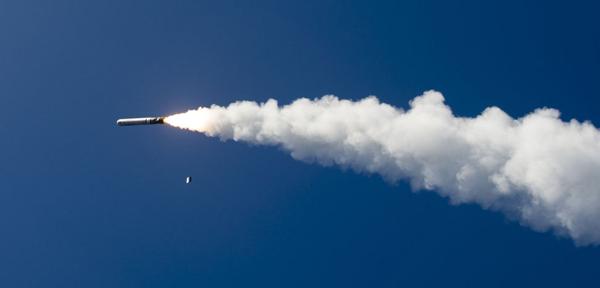
Defence & Security
According to Defence Minister Bjrn Arild Gramme (Sp), the Norwegian government will begin the development of a supersonic missile system in partnership with Germany. The defense minister Arild said, "We must start work today to develop the weapons that will protect us against tomorrow's threats. The new missile will strengthen Norway's defense capability and ability to fight targets at long distances and is scheduled to be ready in 2035."
Russia has been developing hypersonic missiles since the United States' withdrawal from the ABM Treaty in 2002, which obliged Russia to begin building hypersonic weapons — According to President Vladimir Putin.
Norway To Develop New Supersonic Missile In Collaboration With Germany In Response To The Threat Posed By Russian Hypersonic Missiles
According to Defence Minister Bjrn Arild Gramme (Sp), the Norwegian government will begin the development of a supersonic missile system in partnership with Germany. The defense minister Arild said, "We must start work today to develop the weapons that will protect us against tomorrow's threats. The new missile will strengthen Norway's defense capability and ability to fight targets at long distances and is scheduled to be ready in 2035."
Norway has already developed the National Advanced Surface-to-Air Missile System (NASAMS), a medium-range missile defense system designed and developed jointly by Raytheon and Kongsberg Defence & Aerospace, primarily for the Royal Norwegian Air Force (RNoAF) to identify, engage, and destroy aircraft, helicopters, cruise missiles, and unmanned aerial vehicles.
The missile defense system is used by the defense forces of 13 nations, including Norway, Spain, the United States, Finland, Hungary, the Netherlands, Australia, Indonesia, Qatar, Oman, Lithuania, and an undisclosed country.
This missile defense system has also been inducted into the navies of different countries. The development of NASAMS began in 2007 and was delivered to the Norwegian Armed Forces from 2011 to 2015.
Raytheon and Kongsberg signed a ten-year agreement in June 2015 to expand their relationship by 2025. They are also working on a more advanced version of NASAMS, NASAMS II, with reader readers and 12 missile launchers for faster target recognition and annihilation.
Norway is excelling in missile defense and striking capability. The government is currently implying that a decision be made to begin the supersonic missile's initial design phase. Germany also intends to explore a commissioning decision in the coming year. Once the design phase is done, the government will return to the starting with a recommendation on the project's continuation.
The missile was previously known as the Future Naval Strike Missile (FNSM). In the future, it will be known as the Super Sonic Strike Missile (3SM) Tyrfing.
This industry will create job possibilities for Norwegians while also enhancing international cooperation and cooperation among NATO members confronting a Russian threat.
Russia's Hypersonic Missile Factor
Russia has been developing hypersonic missiles since the United States' withdrawal from the ABM Treaty in 2002, which obliged Russia to begin building hypersonic weapons — According to President Vladimir Putin.
In 2007, When asked about the United States' plans to deploy ballistic missile defenses in Europe, Putin stated that Russia was working on "strategic weapons systems of a completely different type that will fly at hypersonic speed and will be able to change trajectory both in terms of altitude and direction."
Since then, Russia has developed three supersonic missiles that are operational or approaching operational status. These systems were announced by Russian President Vladimir Putin in his Federal Assembly speeches in 2018 and 2019.
According to Putin, these hypersonic missile defense systems have been developed to increase strategic and regional striking capability against NATO nations. The Russian hypersonic missiles developed thus far include the Kh-47M2 Kinzhal ("Daggar," NATO name AS-24 Killjoy), Tsirkon, and Avangard.
The Kh-47M2 is an air-launched ballistic missile with a range of 1,500-2,000 kilometers (930-1,240 miles) and a maximum speed of Mach 10 (ten times the speed of sound). The Mig-31 and the Russian supersonic bomber Tu-22M3 are being used to launch this missile.
The next one is the Tsirkon, a ship-launched hypersonic cruise missile that will be operational by 2023. The Tsirkon will be capable of reaching Mach 9 speeds and will have a range of about 1,000 kilometers. This missile poses a genuine threat to the US fleet because Russia has a large number of nuclear submarines often lurking in NATO waters in the Arctic and Pacific.
The final and most deadly is the Avangard, a hypersonic glide vehicle (HGV) that can be launched from an intercontinental ballistic missile (ICBM) capable of speeds 27 times faster than the speed of sound (Mach 27). According to media reports, these ICBMs can carry three Avangard HGVs, each of which can deliver a nuclear warhead with a yield of up to two megatons.
Given the immediate threat of Russian hypersonic missiles that cannot be intercepted by any missile defense system on the planet, the United States first began working on hypersonic missile research projects, followed by France, and now Norway.
Must Read: North Korea Claims To Have Successfully Launched a Spy Satellite Into Orbit In Its Third Attempt
0 Comments